Over the past couple of weeks I have been able to photograph male, female and immature Lazuli Buntings as they have been gorging on the fruits of serviceberry trees to fatten up before their migration. These images were taken from August 17th through yesterday.
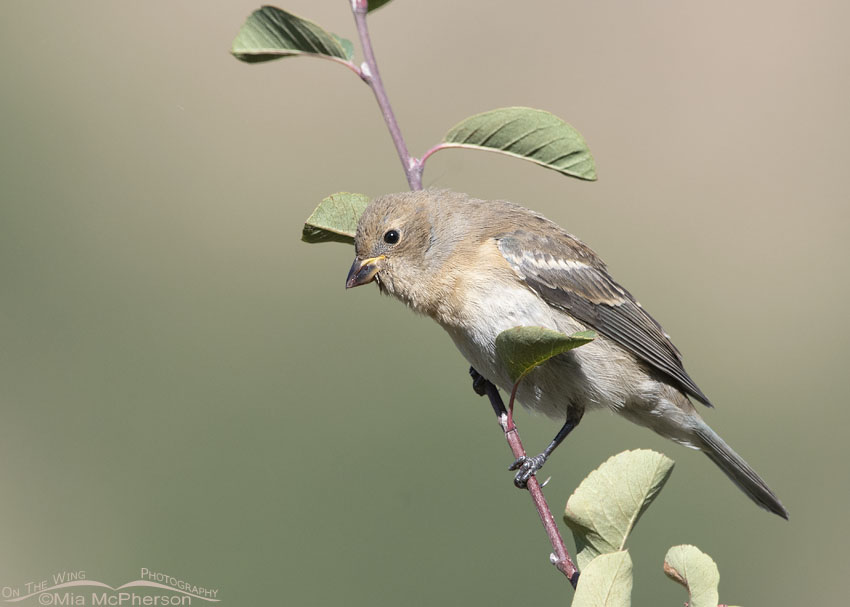 Immature Lazuli Bunting giving me the eye – Nikon D500, f8, 1/1000, ISO 640, Nikkor 500mm VR with 1.4x TC, natural light
Immature Lazuli Bunting giving me the eye – Nikon D500, f8, 1/1000, ISO 640, Nikkor 500mm VR with 1.4x TC, natural light
The juveniles look much like the female Lazuli Buntings at this time of the year, the easiest way for me to tell them apart from the female is that they show a yellow colored, fleshy gape at the base of the bill and the adult females don’t.
This immature Lazuli Bunting does show the yellow, fleshy gape and a bill that has the dried juice of berries on it. I liked the almost curious look I was getting from this young bunting.
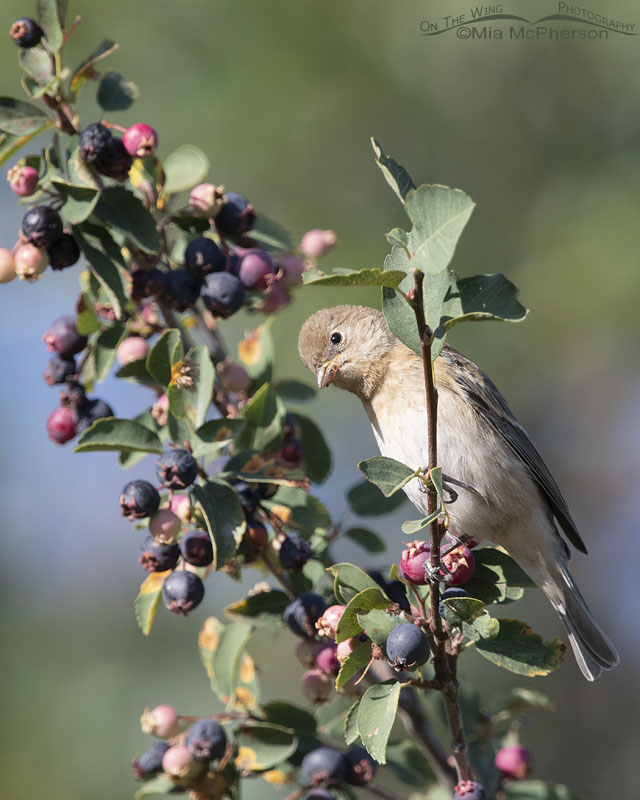 Curious looking immature Lazuli Bunting – Nikon D500, f7.1, 1/1000, ISO 800, Nikkor 500mm VR with 1.4x TC, natural light
Curious looking immature Lazuli Bunting – Nikon D500, f7.1, 1/1000, ISO 800, Nikkor 500mm VR with 1.4x TC, natural light
I liked the curious look I appeared to be getting from this immature bunting too. Some of the serviceberry trees have been picked clean but there are some like this one that are still heavy with fruit and the fruit is attracting the buntings and many other birds right now. This young bunting has spots of dried juice on its lower mandible and shows the normal color of their bill better than the top photo.
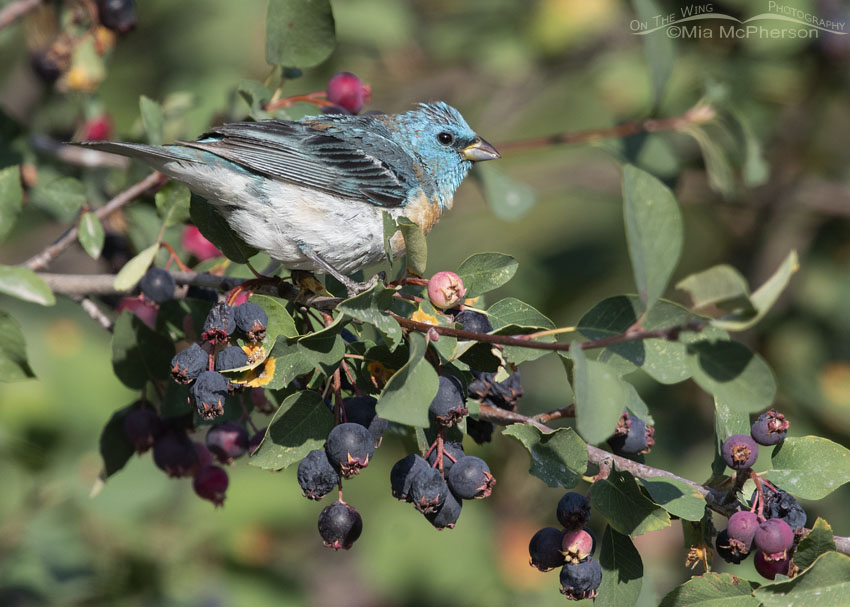 Adult male Lazuli Bunting in a Serviceberry – Nikon D500, f7.1, 1/1000, ISO 800, Nikkor 500mm VR with 1.4x TC, natural light
Adult male Lazuli Bunting in a Serviceberry – Nikon D500, f7.1, 1/1000, ISO 800, Nikkor 500mm VR with 1.4x TC, natural light
Lazuli Bunting males are much more brightly colored than the females and immature birds, especially on their breeding grounds. I photographed this male as he was feeding on the serviceberry berries two days ago.
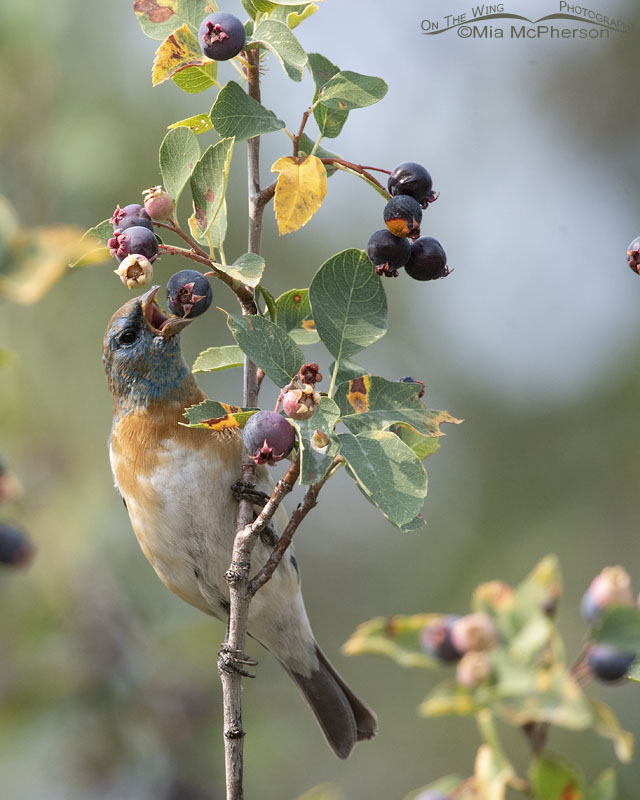 Molting male Lazuli Bunting eating a Serviceberry berry – Nikon D500, f7.1, 1/800, ISO 800, Nikkor 500mm VR with 1.4x TC, natural light
Molting male Lazuli Bunting eating a Serviceberry berry – Nikon D500, f7.1, 1/800, ISO 800, Nikkor 500mm VR with 1.4x TC, natural light
Lazuli Buntings form small flocks at this time of the year and begin to molt, they do not complete molting on their breeding grounds instead they will fly to southern Arizona and New Mexico and Sonora, Mexico and complete their molt there over a period of about two months and then continue their migration.
This male has started the first part of his molting process. I photographed him the same day that I found the Baltimore Oriole and the air was filled with smoke that day so his colors don’t seem very vivid due to that not the molting process.
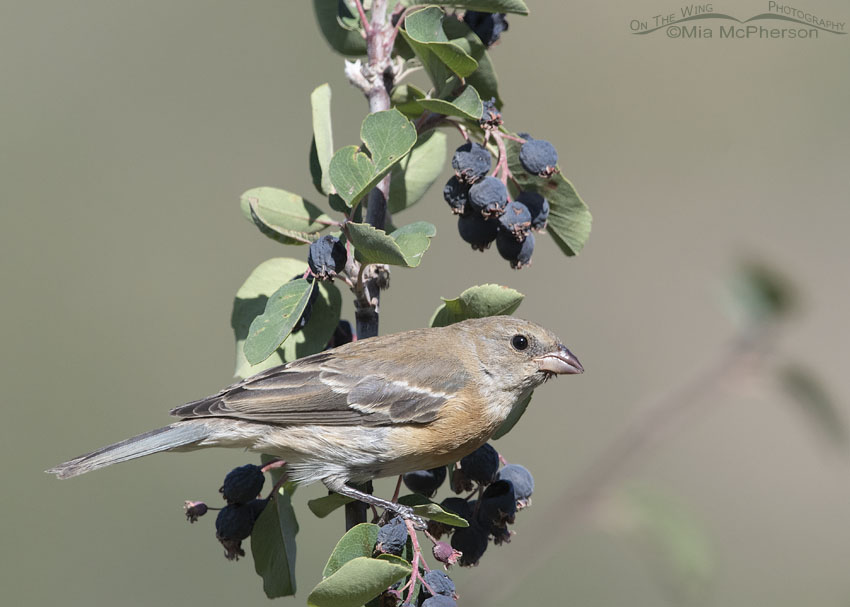 Adult female Lazuli Bunting in a Serviceberry – Nikon D500, f8, 1/1000, ISO 640, Nikkor 500mm VR with 1.4x TC, natural light
Adult female Lazuli Bunting in a Serviceberry – Nikon D500, f8, 1/1000, ISO 640, Nikkor 500mm VR with 1.4x TC, natural light
Female Lazuli Buntings are duller in appearance than the males but they often show a hint of blue color on the top of their tails like this female does. This female stopped eating the fruit long enough to look in my direction for a few seconds before she flew away.
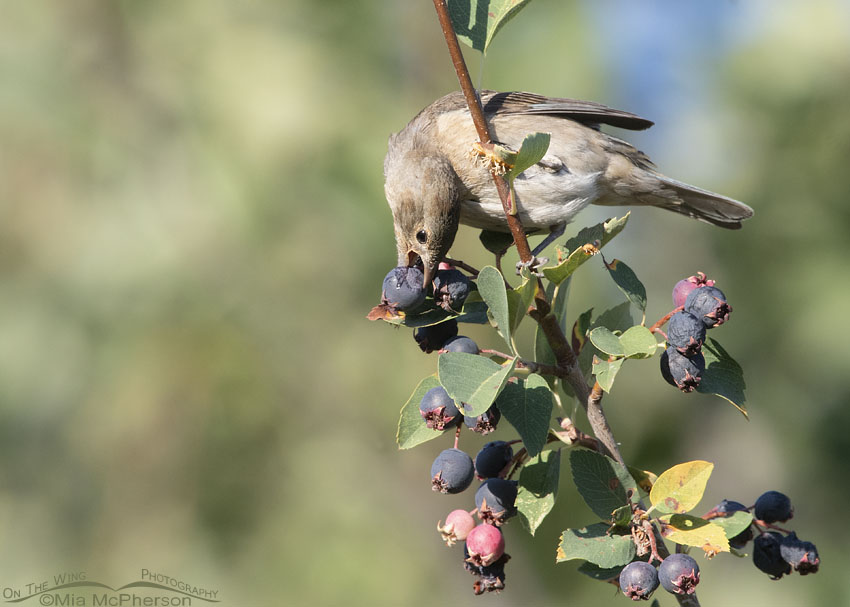 Female Lazuli Bunting eating a Serviceberry berry – Nikon D500, f9, 1/500, ISO 800, Nikkor 500mm VR with 1.4x TC, natural light
Female Lazuli Bunting eating a Serviceberry berry – Nikon D500, f9, 1/500, ISO 800, Nikkor 500mm VR with 1.4x TC, natural light
I photographed this female Lazuli yesterday as she gorged on the ripe, juicy berries, she twisted her head around often while poking her bill into the berry.
The Lazuli Buntings will begin their migration soon and I hope to take more photos of them before they go. I always miss these birds when they are gone for the winter.
Life is good.
Mia
Click here to see more of my Lazuli Bunting photos plus facts and information about this species.


Well, this is my first introduction to the Lazuli. I had never heard of the bird before your post. What a terrific series of pics! As with all of your images I am struck by the care given to detail and composition. Thanks Mia.
Beautiful pictures on all fronts Mia.
What a beautiful (and diligent) family of birds.
Thank you.
The colors are magnificent Mia in all the images. Thank you for always sharing your talents and knowledge.
Beautiful photos! That second picture shows the wheels turning in the thought process! A beautiful bird we do not get here in NE Wisconsin.